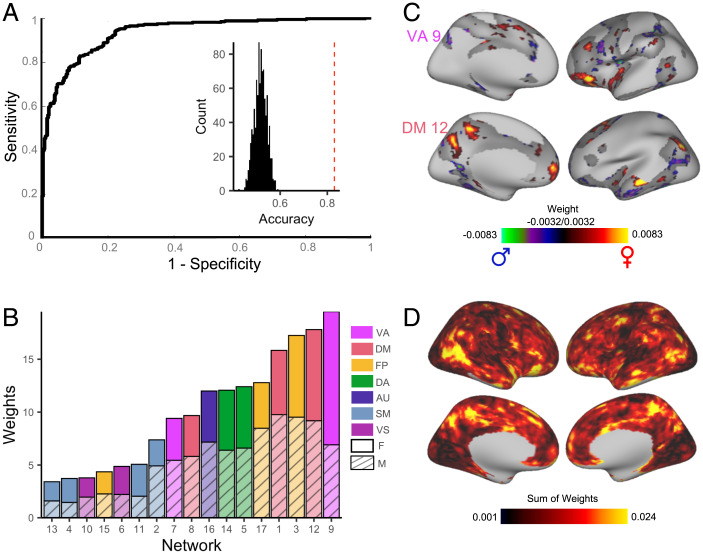Fig. 3.
Multivariate pattern analysis using support vector machines predicts subject sex based on functional topography. (A) SVMs with 2F-CV were used to construct multivariate models that classified participants as male or female. The ROC curve of the resulting model is depicted. Area under the ROC curve was 0.94; average sensitivity and specificity of the model were 0.76 and 0.88, respectively. Models classified participants as male or female with 82.9% accuracy. Inset histogram shows distribution of permuted accuracies. Average accuracy from real (nonpermuted) data are represented by the dashed red line. (B) To understand which networks contributed the most to the prediction, positive and negative model feature weights were summed separately across all vertices in each network. The most important topographic features in this model were found in association cortex and were maximal in the ventral attention network and default mode network. (C) The top 25% of vertices in terms of feature importance in the SVM model are displayed for the ventral attention network and default mode network. (D) At each location on the cortex, the absolute contribution weight of each network was summed, revealing that association cortex contributed the most to the multivariate model predicting participant sex.

